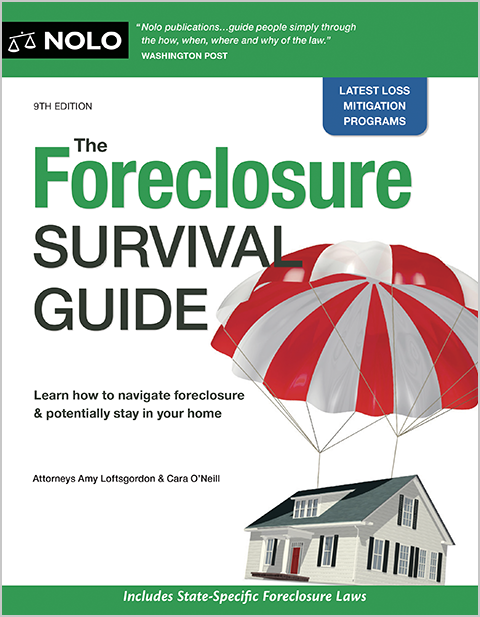Learn about the California one action rule in foreclosure.
If you're facing a foreclosure in California, you should understand your rights, including your rights under the one action rule. This rule limits how many times a lender can sue you over a home loan default, helping you avoid multiple lawsuits (and the stress associated with being sued).
In this article, you'll learn what the one action rule is, how it works during foreclosure, and what it could mean for you as a homeowner in a California foreclosure.
What Is the California One Action Rule in Foreclosure?
If you fall behind in your mortgage loan payments, California's "one action rule" says that your lender can only take one action against you, whether it is to:
- conduct a trustee's sale
- sue on the promissory note for the balance of the debt, or
- judicially foreclose.
(Utah, which has a foreclosure process that is like the California foreclosure process, has a similar rule)
How Does the One Action Rule Protect Homeowners?
Most residential foreclosures in California are nonjudicial, which means the lender does not have to go through state court to foreclose. However, sometimes, California foreclosures are judicial and go through the state court system.
California law restricts a lender with a secured interest in real property—for example, the lender that made your home loan—to taking only one action to enforce the debt. The one action rule states "There can be but one form of action for the recovery of any debt or the enforcement of any right secured by mortgage upon real property." (Cal. Code Civ. Proc. § 726(a)).
So, a lender is allowed to do only one of the following:
- foreclose nonjudicially (conduct a trustee's sale)
- foreclose judicially, or
- sue the borrower personally on the promissory note for the balance of the debt.
Ultimately, this rule limits a lender to bringing only one foreclosure proceeding or court action against a borrower who falls behind in mortgage payments.
Relationship to California's Security-First Rule
The one action rule in California appears to allow the lender to sue the borrower personally based on the promissory note and skip foreclosure altogether. But California courts have interpreted the rule to mean that a lender must pursue the real estate before suing the borrower personally. (See Walker v. Community Bank, 10 Cal. 3d 729 (1974) (2025).) This concept is known as the "security-first rule." The goal of this rule is to prevent a secured lender from suing the defaulting borrower on the debt itself before foreclosing on the security interest.
So, a mortgage lender (or the current loan holder) must foreclose the security (your home) rather than suing you directly on the underlying promissory note. (Cal. Code Civ. Proc. § 726(a) (2025).) As a result of the one action and security-first rules, the lender's options are significantly limited when a borrower defaults on a mortgage loan.
Second Mortgages, HELOCs, and Other Junior Lienholders
If the first-mortgage lender forecloses and you have a second or third mortgage, or a HELOC, you might face a lawsuit from one of those lenders in certain circumstances.
What happens to junior lienholders in a foreclosure. When a senior lienholder forecloses, any junior liens (like second mortgages and HELOCs, among others) are also foreclosed, and those junior lienholders lose their security interest in the real estate. A foreclosed lienholder is then usually referred to as a "sold-out junior lienholder."
A sold-out junior lienholder can generally sue the borrower personally on the promissory note because it has not had its "one action" yet and it is not limited by the security-first rule because the property has already been foreclosed. So, if your house is underwater, you might face lawsuits from those lenders to collect the balance of the loans.
Anti-deficiency law. But under California law, a lender can't get a personal judgment (a deficiency judgment) against you if the loan was:
- a purchase money loan (a loan that is used to buy the property)
- a refinanced purchase money loan that was executed on or after January 1, 2013, except to the extent that new principal was advanced which is not applied to the purchase money loan (fees, costs, or related expenses of the refinance are also not covered by the anti-deficiency protection), or
- a seller-financed loan (a loan you take out from the person or entity selling the property to you).
Black Sky Capital, LLC v. Cobb
Previously, under California law, if a bank or mortgage company held both senior and junior deeds of trust on a property, the holder was barred from suing to collect the deficiency on the sold-out junior debt after nonjudicially foreclosing the senior deed of trust. But in Black Sky Capital, LLC v. Cobb, 7 Cal.5th 156 (2019), the California Supreme Court decided that when a bank or mortgage company holds two deeds of trust on the same property, the holder may generally seek a deficiency judgment on the extinguished junior lien.
However, in the Black Sky case, the senior and junior loans were separated by a substantial time period. So, if a lender made both loans concurrently, essentially treating one loan as two (perhaps in order to recover under the junior loan what it couldn't recover if it had issued a single loan on the same property), the Court indicated that the outcome of such a case could be different.
Your Rights Under California Foreclosure Laws
In addition to the one action and security first rules, homeowners typically have several important rights in a California foreclosure under both federal and state laws. These rights include receiving preforeclosure notifications and assistance, the opportunity to apply for loss mitigation to help avoid foreclosure, and the right to be notified of key foreclosure events throughout the process.
Homeowners also get the right to bring the loan current (reinstate it) and stop the foreclosure sale, pay off the loan in full to prevent the sale, or receive special protections if they're serving in the military. Additional rights include the option to file for bankruptcy and, in some cases, to collect any surplus funds after the foreclosure sale. By understanding the California foreclosure process and these rights, homeowners can put themselves in the best position to resolve their situation, minimize stress, and possibly save their home or navigate the process with confidence.
Where to Find Help for Foreclosure and the One Action Rule
If you're facing a foreclosure in California and want to learn more about the process, consider talking to a foreclosure attorney.

